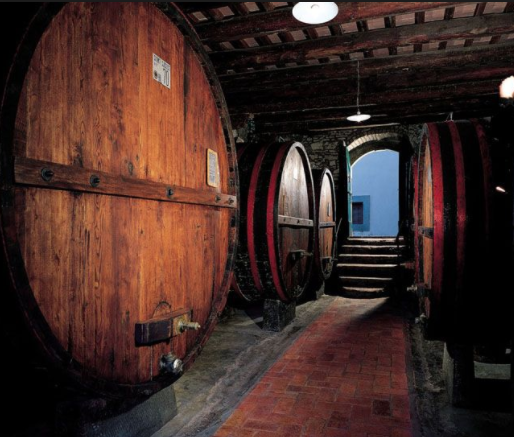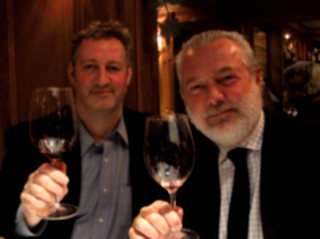"IF I MADE CHIANTI"
Finally in 1984, the laws governing what Chianti (The Formula) could and could not be were changed in order to set Higher Standards, making Chianti a Great Quality Wine and eliminating the facts that allowed producers to make Poor Quality wine if they so choose to. They could not anymore. The rules for making Chianti which allowed for the possibility to produce inferior Chianti were eliminated. White grape varietals such as Trebbiano and Malvasia Bianco in large quantities were no longer permitted into any wine labeled Chianti. Bravo! If the laws governing the production of Chianti had stayed like this, it would have been a great thing, and all Chianti would be of a high quality and of Long Standing Native Traditions and practices. Chianti was and would be a excellent quality wine that was and tasted as it should, like “Chianti.”
Unfortunately the governing bodies of the Italian Government and Chianti Consorzio did something atrocious in the year 1996. Once again they changed the laws on making Chianti. They made a “Terrible Blunder,” in the name of what they said was to be a better Chianti, they allowed for the use of International grapes such as Merlot, Cabernet Sauvignon, and Syhrah. And they allowed for up to 20% of these other grape varietals with the primary grape of Sangiovese being a minimum of 80% to 100% at the producers' discretion and desire as to how each individual Estate wanted to make their Chianti. These laws made for a wide range in latitude of Chianti as a whole. Allowing for Chianti that if it had 10% or more of Cabernet Sauvignon or Merlot, it would completely change the character of Chianti for those estates that chose to use amounts of even 5% or more of Merlot or Cabernet.
Thank God there was in this large range of latitude in the laws of what was aloud in Chianti and in what percentages, so what we end up is a wide range of different Chianti styles. Not Good!
Now this all being said the laws for making Chianti also included latitudes for making what can be labeled Chianti and wines that are labeled as Chianti, allowed for wines that do not taste like Chianti. They do not taste like Chianti as they have Merlot and or Cabernet Sauvignon in them. The Merlot and Cabernet Sauvignon and overpower the more delicate Sangiovese grape, resulting in a wine that does not taste like Chianti, but some kind of Super Tuscan wine or so-called baby Super Tuscan. If you put Merlot or Cabernet into what is supposed to be Chianti, that wine will not have the classic quintessential character that Chianti has, when made in the classic traditional style. A proper Chianti should be a light to medium body wine, possessing red fruit flavors, with hingts of earthiness and a tad of spice flavor as well.
What a Chianti should not be, is a Big Full Bodied Fruit Bomb wine, nor anything approaching it, as some Reserve Chiantis are these days.
As stated, a Chianti should be light to medium bodied. This does not mean that it should be thin or lack substance. It should definitely have flavor, but in a more subtle and restrained manor which makes the wine go well with the food you are eating and not overpower it as many wines tend to do these days.
If I myself (and my friend Charles Sciccilone) could set these laws as the new DOCG laws of Chianti Classico the laws would never have to be changed again. The laws, the way they are set today are a little too broad. One thing that is good in the way the laws stand now is that they do allow for a proper Chianti to be made, and most Chianti’s are made in this manner, but at the same time they allow for non-native varieties and the allowance of 100% Sangiovese. These last two regulations must be changed for all Chianti’s to be “True Chianti” Non native grapes like Merlot and Cabernet Sauvignon should never be allowed in Chiant (if it was up to me), and Chianti should always be a blend of mostly Sangiovese (85 to 95%), with 5% to 15% native secondary grapes such as : Colorino, Canaiolo, and or Malvasia Nero, etc. It is as simple as that! So, let us hope that one day in the near future, these laws will be laid down and every single bottle labeled Chianti is actually real, true Chianti that lives up to this great wines history and origins.
Chianti Classico. What is it? First off, the area came first, the wine Chianti Classico is name after the area it comes from, which is Chianti. The Chianti Classico is the most famous. It stretches from just a few miles south of Florence at its most northern tip and runs down almost 30 miles to Castelnuovo Berardenga at its most southern point. As Chianti grew in popularity and fame, a number of other areas in Tuscany where Chianti can be made, were developed. Some of these areas are Colli Fiorentini, Colli Senesi, Colli Arentini, and Rufina. None of these sub areas have ever gained anywhere near the fame as the original Chianti Classico Zone. The Chianti Zone of Rufina, just outside Florence is the most prestigious zone outside of Chianti Classico, when it comes to Chianti. The three most well know producers in the Chianti Rufina zone are : Frescobaldi, Selvapiana, and Castello Trebbio. And although the zone of Rufina is not as well known as the Chianti Classico zone.
So in closing, let us say that we hope the laws that govern the making of Chianti Classico will be changed some day. Changed for the better, preserving tradition and history of this great Italian Wine. "Please" !!! Oh, how I wish it would happen. It would be best if it happens sooner than later, that in the making of Chianti, there shall be no Merlot, Cabernet Sauvignon, Syrah or any other non-native or non-traditional grape varieties of Chianti Classico. Also the laws should be changed to eliminate 100% Sangiovese Chianti’s, Chianti should always be a blend, even if just 2% of another native grape such as Colorino, Canaiolo, or Cielegiolo were added. Chianti must always be a blende wine, dominated by mostly Sangiovese (at least 85%) with a smaller percentage of native grapes. The region of Chianti Classico is one of the World’s most beautiful. It is enchanting, filled with castles, all forms of wine estates from small and simply to big and majestic. The beautiful rolling hills of Chianti are filled with Cypress trees that dot the crest of many a hill, along with rugged stone farm houses and the wondrous rows Sangiovese vines lining the gently sloping hills.
Chianti is relatively untouched or spoiled by any type of ugly modern structures. The Chiantigiana road is still the ancient one built by the Romans and its pavement blends in perfectly with its untouched surroundings. Chianti is filled with lovely little towns like Castellina, Gaioli, Greve, and Radda where you will find the famous Dante quoting butcher Dario Cecchini. You can visit and stay in beautiful wine estates like Fattoria Valle, Castello Verazzano in Greve where the explorer Giovani Verazzano is from. You can stay at the beautiful estate of Vignamaggio where Gioconda lived and was painted my Michael Angelo. She is “Mona Lisa.”
Chianti, it’s not just a wine. “It’s a Place, a very beautiful place!”
by DANIEL BELLINO ZWICKE
Below is a Small LIST of TRUE CHIANTI’S made primarily with Sangiovese with small amounts of native sub-varities such as Canaiolo, Malvasia Nero, Colorino, and Celegiolo and not containing any Cabernet Sauvignon, Merlot, Syhrah, or any International Varieties “What-so-Ever.”.
Monsanto “Il Poggio” Chianti Classico Riserva
Castello Verazzano Chianti Classico
Castello Brolio Chainti Classico Reserva
Castellow Querceto Chianti Classico
Vignamaggio Chinati Classico Riserva “Mona Lisa”
Rufino Chianti Classico Riserva “Ducale” (Gold Label)
Selvapiana Chianti Rufina
Badia Coltobuono




























